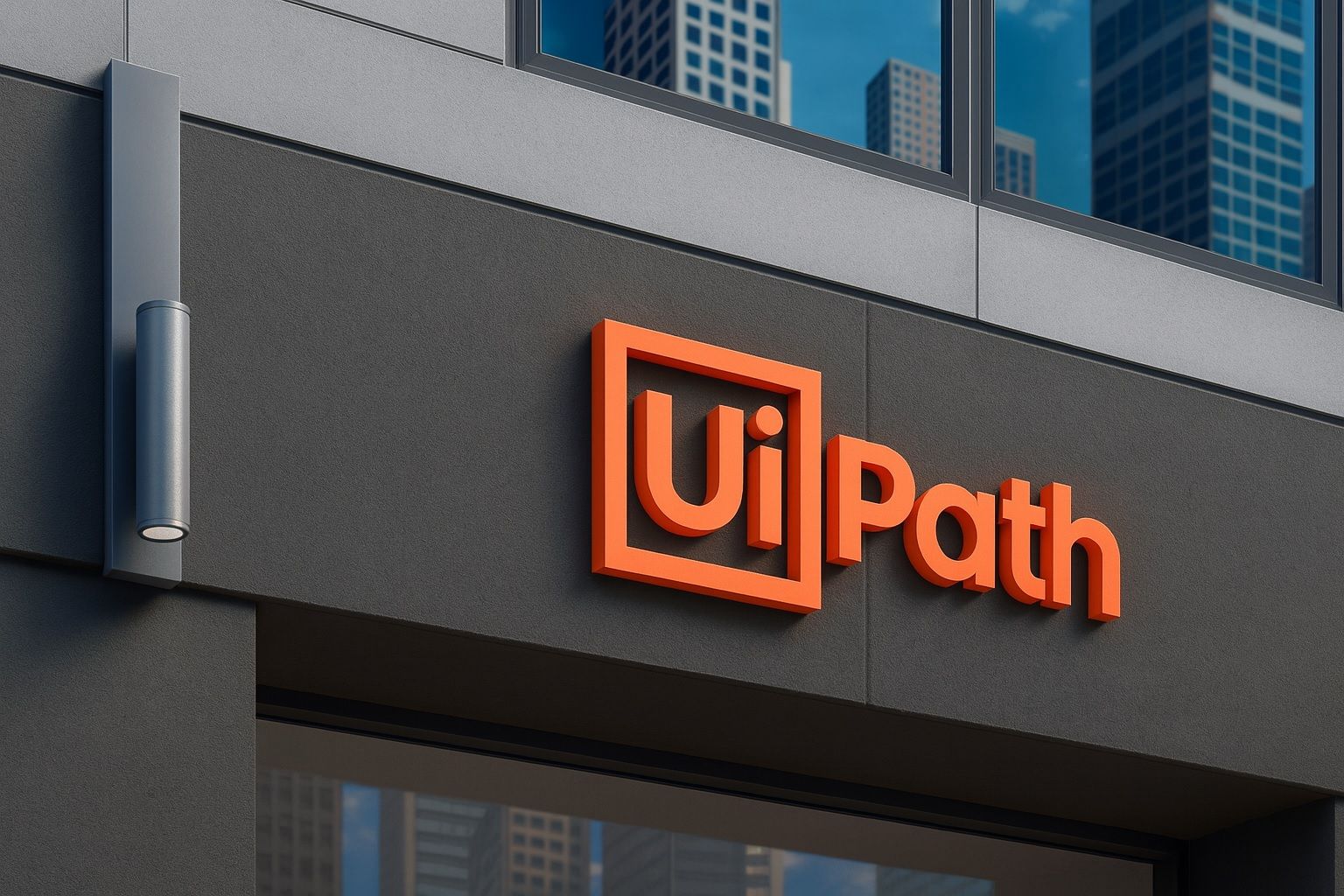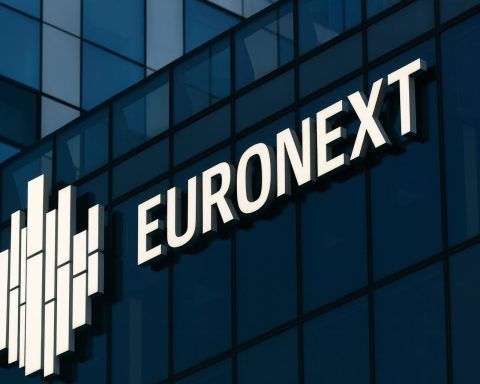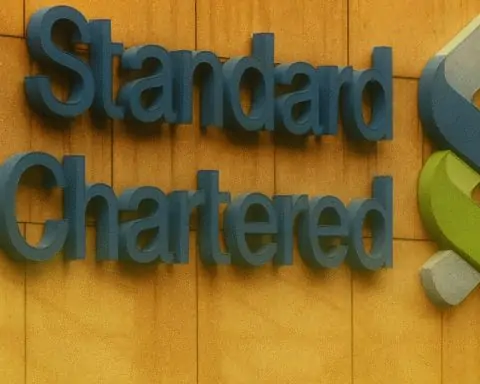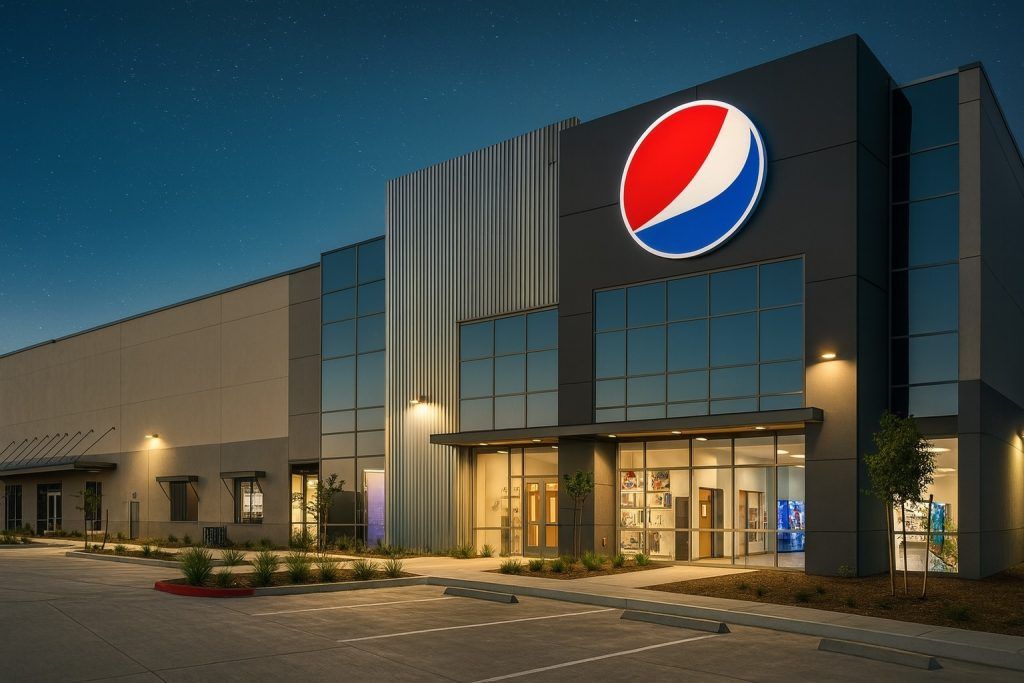- AI Buzz Drives Big Rally: UiPath (NYSE: PATH) shares surged nearly 20% in early October 2025, climbing to the mid-$15s – the highest level since mid-2024 – amid a flurry of AI partnership announcements and an overall tech stock boom [1] [2]. On October 8 alone, PATH jumped 5% to $15.58, capping a rapid run-up from the ~$12 range just a week prior [3] [4]. Trading volumes doubled as investors piled in during this “AI frenzy,” vastly outpacing the broader Nasdaq’s gains [5].
- New ‘Agentic AI’ Partnerships: At its late-September FUSION 2025 event, UiPath unveiled high-profile collaborations with OpenAI, Google, NVIDIA, and Snowflake to infuse generative AI into its automation platform [6]. The deals include a ChatGPT connector (OpenAI), voice-activated workflows via Google’s Gemini AI, on-premise AI model integration with NVIDIA’s NeMo/NIM models for regulated industries, and real-time data automation using Snowflake’s Cortex AI [7]. Analysts say this bold foray positions UiPath as an emerging hub for enterprise AI automation beyond its RPA roots [8].
- Earnings Beat and Guidance Up: UiPath’s latest quarterly results (FY2026 Q2, quarter ended July 31, 2025) topped expectations, with revenue up ~14.6% year-over-year to $362 million and a swing to a small GAAP profit of $1.6 million [9]. Annual Recurring Revenue grew 11% to $1.723 billion and free cash flow turned positive (~$45 million) [10]. Buoyed by improved execution and AI-fueled demand, management slightly raised full-year revenue guidance to ~$1.57 billion [11], implying an acceleration in the second half. The CEO noted “growing momentum of our agentic AI capabilities” as customers move from pilot projects to real deployments [12].
- Cautious Optimism from Experts: Wall Street’s take on PATH is mixed despite the AI excitement. One analyst called UiPath’s return to profitability – achieved by ~$45M revenue growth plus ~$40M in cost cuts (an “$85 million swing”) – “a remarkable achievement” [13]. However, the consensus rating remains Hold, with a 12-month price target around $13–14 [14]. Morgan Stanley raised its target from $12 to $15 citing AI opportunities [15], while others like D.A. Davidson urge “more consistent execution” before getting bullish [16]. Notably, Weiss Ratings even reaffirmed a “Sell (D)” grade on Oct. 8, highlighting that some remain skeptical amid the recent euphoria [17].
- RPA Leader Facing Rising Competition: UiPath is a 7-time Leader in Gartner’s RPA Magic Quadrant and also now a leader in Intelligent Document Processing [18]. The enterprise automation market is projected to double by 2028 (RPA spend ~$8.2 billion) [19], attracting heavy competition. Rival Automation Anywhere (private) just launched its own “agentic” AI bots and natural-language interfaces [20], and Microsoft is bolstering Power Automate with AI Copilot features. UiPath’s CEO argues Microsoft’s RPA is “limited… mostly to personal productivity… on your desktop,” whereas UiPath focuses on fully autonomous enterprise workflows in the cloud [21]. This vendor-agnostic, ecosystem-integrating approach – working with all major AI players – is seen as a strategic moat for UiPath [22].
From RPA to ‘Agentic Automation’: A New AI Frontier
UiPath built its name in Robotic Process Automation (RPA) by automating repetitive, rule-based tasks (like data entry or invoice processing). Now it’s pivoting toward what it calls “agentic automation,” where AI-powered “agents” handle more complex, knowledge-driven workflows with minimal human input [23]. In practical terms, this means going beyond scripted bots: AI agents can understand context, make decisions, and adapt on the fly – a natural evolution in the era of generative AI.
At the Fusion 2025 conference in late September, UiPath even rebranded itself as “a global leader in agentic automation,” underscoring this strategic shift [24]. The company’s vision is to become an orchestration hub where human employees, RPA bots, and AI agents all collaborate to automate end-to-end business processes [25]. “Customers consistently tell us…agentic AI and automation are stronger together,” CEO Daniel Dines said, emphasizing that merging AI with automation delivers tangible value [26]. By embedding advanced AI (like large language models for understanding text or images) into its platform, UiPath aims to let organizations automate not just clerical tasks, but higher-level activities that previously required human judgment.
This paradigm shift has been the talk of the enterprise tech world. It also reflects a broader trend: businesses are eager to leverage Generative AI to boost productivity, but they need reliable, governed systems to deploy these AI models in practice. UiPath’s answer is an “agentic automation” platform that brings AI models into high-trust workflows with proper controls. For example, fraud detection or healthcare processes demand AI that is both powerful and trustworthy. “Sensitive processes like fraud detection or healthcare workflows demand AI that is both powerful and trustworthy,” explained UiPath’s Chief Product Officer Graham Sheldon, noting that by integrating NVIDIA’s AI models directly into the UiPath platform, customers can get “the control, transparency, and confidence they need” for real business impact [27]. In essence, UiPath is promising enterprise clients the best of both worlds: cutting-edge AI capabilities and enterprise-grade governance.
AI Partnerships Galore: OpenAI, Google, NVIDIA, Snowflake
The catalyst for UiPath’s recent rally was a string of headline-grabbing AI partnerships unveiled around the end of September 2025. In one whirlwind week, UiPath announced tie-ups with some of tech’s biggest names:
- OpenAI (ChatGPT): A new connector to embed OpenAI’s GPT large-language models into UiPath workflows [28]. This allows companies to plug ChatGPT’s natural language understanding and generation directly into their automation routines – for instance, to summarize documents or generate responses as part of a process.
- Google (Gemini AI): Collaboration with Google Cloud to leverage Gemini, Google’s upcoming next-gen AI model, enabling voice-activated and conversational automations [29]. Users will be able to interact with UiPath bots via natural speech, essentially commanding complex workflows with a prompt or voice query – a sci-fi-like leap from today’s point-and-click bots.
- NVIDIA (Nemotron & NIM): A partnership with NVIDIA to integrate its Nemotron generative AI models and NIM AI microservice platform into UiPath [30]. This focuses on on-premises and secure deployments of AI for “high-trust” industries like finance, government, and healthcare. By supporting NVIDIA’s open-source models (such as the NeMo large-language model family) behind a company’s firewall, UiPath enables advanced AI use cases (e.g. detecting fraud, analyzing medical records) where data privacy and security are paramount. A new Integration Service Connector links UiPath with NVIDIA’s AI back-end, making it seamless for enterprises to deploy generative AI in a governed, scalable way [31] [32].
- Snowflake (Cortex AI): A tie-up with Snowflake to connect UiPath’s automation platform with data insights from Snowflake’s Cortex AI and Data Cloud [33]. This “data + AI + automation” combo means software robots could automatically act on real-time business data. For example, if Snowflake’s analytics detect an anomaly or opportunity in sales data, it could trigger a UiPath process to respond (like adjusting inventory or sending alerts), closing the loop from insight to action.
These announcements, made at UiPath’s Las Vegas conference and in press releases on Sept. 28–30, signal that UiPath is “ready to play a central role in how enterprises actually use AI,” as one analyst observed [34]. In other words, rather than build its own AI models, UiPath is positioning itself as the agnostic integrator of AI – orchestrating various third-party AI services (from OpenAI, Google, NVIDIA, Snowflake, and even Microsoft) within a unified automation platform. This approach could make UiPath’s system a one-stop shop for companies to implement practical AI solutions at scale.
Notably, UiPath didn’t just announce partnerships – it also rolled out new product features to support this AI wave. At Fusion 2025, the company introduced UiPath Maestro, an orchestration tool to coordinate multiple AI agents and bots working across different processes [35]. It also debuted an AI Agent Builder toolkit for developing custom AI-powered assistants, plus a web-based Studio interface to simplify deploying AI-driven automations with proper governance [36]. In a Sept. 30 press release, UiPath literally adopted the language of “agents,” rebranding its offerings around agentic automation and highlighting new capabilities to “orchestrate agents, robots, and humans” together [37] [38].
The market’s reaction to all this was instant and euphoric. After UiPath gave investors “something to get excited about” with these AI deals, the stock spiked over 20% to around $15+ in a single day (pre-market Sept. 30) [39] [40]. While shares didn’t hold all of that gain into the close, they still ended that day up ~6.5% [41]. It was the start of a sustained rally through the first week of October. Clearly, Wall Street sees these partnerships as game-changing signals that UiPath intends to ride the AI wave aggressively.
However, it’s important to note that these are strategic alliances and product launches – the revenue impact is more potential than immediate. UiPath is planting seeds by integrating cutting-edge AI, but investors will be watching whether this leads to faster customer acquisition or upsells (and thus higher ARR) in coming quarters. As one industry expert put it, the announcements amounted to great “momentum” news; the next test is execution: can UiPath convert its AI partnerships into accelerated growth? [42]. That question will likely determine if the stock’s momentum holds or fades.
Financials Improving: Swing to Profit and Solid Cash Position
Beyond the AI buzz, UiPath’s fundamentals have shown real improvement, which underpins some of the bullish sentiment. In early September, the company reported fiscal Q2 2026 results (for the quarter ending July 31, 2025) that impressed investors and analysts alike:
- Revenue Growth: Q2 revenue was $361.7 million, up 14.4% year-over-year [43]. This marked an acceleration from the single-digit growth rates of the previous year, suggesting demand is picking back up as businesses invest in automation [44]. Importantly, revenue slightly beat analyst expectations (~$347M consensus [45]), and management noted strength especially in cloud-based automation services.
- Annual Recurring Revenue (ARR): ARR – a key metric indicating the subscription software business’s scale – reached $1.723 billion, up 11% YoY [46]. UiPath added about $31 million in net new ARR in the quarter [47]. This means existing customers expanded usage (dollar-based net retention was ~108%) and new customer wins contributed to growth. While 11% ARR growth is solid, it does reflect a deceleration from the heady ~40%+ ARR growth rates UiPath had a couple years ago, indicating a maturing core RPA market. (For context, UiPath’s net retention was well above 120% at its peak, but has come down to ~108%, where it stabilized this quarter [48].) Some analysts view the current ARR trend as adequate but not spectacular – a reason they remain cautious [49]. The company’s own guidance calls for further ARR growth slowdown by year-end, which tempered enthusiasm for the stock’s outlook [50].
- Profitability: In Q2, UiPath achieved a notable milestone – turning a GAAP net profit for the first time as a public company. Net income was $1.58 million, a tiny profit but a stark improvement from the $-86 million loss a year earlier [51]. On an adjusted basis, EPS was $0.15, handily beating the $0.08 consensus estimate [52]. The swing to black ink was driven by a combination of revenue growth and cost discipline. UiPath has been streamlining expenses (including a workforce reduction last year), and it showed in a ~$40M reduction in operating costs even as revenue grew by ~$45M [53]. “UiPath did this by growing its top line by around $45 million while simultaneously reducing operating expenses by nearly $40 million…an $85 million swing and a very small profit,” noted Holger Mueller of Constellation Research, calling it “a remarkable achievement” given that growth, while good, “wasn’t exactly sensational” [54]. In short, management’s focus on efficiency paid off. This operating leverage – modest growth translating to outsized improvement in the bottom line – is a positive sign that the business model can scale. Executives hinted that with “one more quarter like this” of balanced growth and cost control, sustainable profitability is within reach [55].
- Cash Flow and Balance Sheet: UiPath’s finances are bolstered by a strong balance sheet. The company generated $45 million in free cash flow in Q2 [56], and it holds around $1.4–1.5 billion in cash and equivalents on hand [57] [58]. Debt is minimal (just ~$79 million long-term debt [59]), so UiPath has net cash well above $1 billion. This war chest gives them resilience and flexibility – they can continue investing in R&D and strategic acquisitions (e.g. in AI, process mining, etc.) without needing external financing. High gross margins (~84%) also underscore the attractive economics of their software subscription business [60].
- Guidance Raised: On September 6, alongside Q2 earnings, UiPath slightly raised its full-year outlook. It now expects FY2026 (calendar 2025) revenue of ~$1.571–1.576 billion [61], up from prior guidance of ~$1.55 billion. While a modest bump, this implies revenue growth accelerating to ~19% YoY in the second half of the year [62] – likely anticipating a boost from new AI products and typical year-end enterprise budget flush. For the upcoming Q3 (Aug–Oct quarter), UiPath guided revenue of $390–395M, which was a bit above Wall Street forecasts [63]. The guidance beat and optimistic tone from management contributed to the post-earnings stock jump in September. CFO Ashim Gupta said momentum from customers and partners around the new agentic automation platform, combined with continued cost focus, “positions us well as we enter the second half of the year” [64]. In other words, UiPath expects the AI buzz and improving sales execution to translate into stronger deals pipeline in the back half of 2025.
All told, UiPath’s financial picture in late 2025 is much healthier than a year ago. The company has demonstrated it can grow double-digits and almost break even at the same time – a crucial proof point for investors after years of losses. This improved footing is likely fueling more confidence to pursue its AI ambitions aggressively. It’s also a buffer against macroeconomic volatility: with ample cash and positive cash flow, UiPath can weather bumps in IT spending or invest through a downturn if needed.
Market Sentiment: Bulls vs. Bears on the AI Future
Despite UiPath’s improving metrics and flashy AI moves, professional analysts by and large remain cautiously optimistic – supportive of the strategy but waiting for more proof in the numbers. The stock’s consensus rating is Hold, and the median price target in early October was around $13.3 (roughly where the stock traded prior to the AI spike) [65]. In other words, after the recent rally to ~$15, Wall Street on average sees the stock as fairly valued for now [66]. Price targets among analysts span from about $10 on the bearish end to $18 on the bullish end [67], reflecting debate about how quickly UiPath’s AI initiatives will pay off in revenue growth.
Several analysts have updated their views post-AI-announcements and earnings:
- Morgan Stanley (Equal-weight) noted the AI partnerships open up a much larger opportunity and could reaccelerate growth. MS raised its target price from $12 to $15 after the late-Sept news, yet still wants to see execution, maintaining a neutral stance overall [68].
- DA Davidson initiated coverage in October with a Neutral rating and $12 target, basically a wait-and-see approach. They cited the need for “more consistent execution” and evidence that AI can drive higher bookings before turning bullish [69].
- Zacks Investment Research upgraded PATH to “Strong Buy” in early October, driven by its quantitative model that likely favored UiPath’s positive earnings momentum [70]. (Zacks ratings are short-term and algorithmic, so this is less about an analyst’s long-term conviction and more a reflection of recent upside surprises.)
- On the skeptical side, on Oct. 8 Weiss Ratings reiterated its Sell (D) rating on UiPath [71]. Weiss’s model-based rating pointed to concerns like the stock’s past volatility and perhaps still-unproven profit trajectory. The fact this came even as shares were soaring ~5% that day highlights that not everyone is swept up in the AI hype. Similarly, a contributor on Seeking Alpha downgraded PATH to Hold in an Oct. 9 article, noting that while AI progress is laudable, ARR growth has slowed and net retention has slipped, indicating “potential demand softness” lurking beneath the surface [72]. That author cautioned that UiPath’s own guidance of further ARR deceleration justifies some investor caution for now [73].
- Stocktwits/Reddit sentiment meanwhile has been exuberant. Retail traders on forums dubbed PATH a “beast” with “no signs of slowing down” during the early October run-up [74]. This kind of euphoric sentiment can itself drive short-term demand for the stock, but often coincides with overbought technical conditions.
Indeed, from a technical analysis perspective, UiPath’s stock looked short-term stretched as of Oct. 9. It was trading well above its 50-day (~$11.7) and 200-day (~$11.9) moving averages – a sign of strong momentum [75] – and the 14-day Relative Strength Index (RSI) hit ~76, which is into “overbought” territory [76]. Such an RSI > 70 suggests the stock might be due for a near-term pullback or consolidation, as many buyers have already jumped in. Chartists see the ~$16 level (just above recent prices) as a potential resistance point around the prior 52-week high, while ~$13–14 is now support on any dip [77]. In plain English: the stock’s rapid ascent may pause or retrace a bit in the short run as the market digests the news and early investors take profits. Notably, UiPath’s own CEO Daniel Dines sold ~122,700 shares (about 14% of his stake) on Oct. 8 at an average ~$14.89 [78]. Such insider selling can be for many reasons (taxes, diversification, a preset plan, etc.), but coming immediately after a sharp rally, it’s something investors took note of. If nothing else, it injected a note of sobriety that even insiders thought the stock’s rapid rise was a good opportunity to trim holdings.
Zooming out, UiPath’s stock is up ~23% year-to-date as of early October [79] [80], a solid rebound considering it traded in single digits during summer. However, longer-term shareholders will recall that PATH’s IPO-era euphoria saw the stock hit $85 in 2021 before a harsh comedown. Even after the recent surge to ~$15, the stock remains ~80% below that peak. This underscores both the upside potential if the company truly delivers on growth and the risks – UiPath has been a volatile ride. It’s operating in a fast-evolving sector, and its valuation still needs to be justified by sustained performance. At ~$15.5, UiPath’s market cap is about $8.3 billion, which is roughly 5 times trailing revenue – a fair multiple given ~15% growth and small profits [81]. Bulls argue that if AI-powered automation unlocks a new hyper-growth phase, the stock could have much more room to run. Bears counter that competition and execution risks could cap growth, making the current valuation full. The next few quarters of results will be crucial to settling that debate.
Competitive Landscape: Everyone Wants an AI Automation Slice
UiPath is the largest pure-play automation software vendor, but it’s certainly not alone. The booming prospects of AI-driven automation are drawing in a crowd of competitors, from startup RPA specialists to enterprise software giants. How UiPath fares will depend in part on its differentiation against these players:
- Automation Anywhere (AA): UiPath’s closest pure-play rival, AA is a private company and also recognized as a leader in RPA. It has been racing to add generative AI features too, recently touting pre-trained “Automation Co-Pilot” agents and natural language interfaces for business users [82] [83]. At its own user conference (coincidentally also in early October), Automation Anywhere used buzzwords like “GPT-powered” and “agentic automation” as well [84]. Essentially, AA is matching UiPath’s narrative step for step – which is not surprising, as both see the same market trends. The two firms have often leapfrogged with feature releases. Many enterprises evaluate both, and the competition keeps each on its toes. One advantage for UiPath is its larger scale and ecosystem; one for AA is its cloud-native platform (UiPath is also now cloud-first, but AA was earlier to SaaS) and perhaps a more focused product set. Industry observers note that the RPA market could support multiple winners given its growth, but there’s also speculation that AA might pursue an IPO or get acquired, which could shuffle the competitive dynamics.
- Blue Prism (SS&C): Blue Prism was an early RPA pioneer (especially in Europe) that got acquired by SS&C Technologies in 2022. Now as SS&C Blue Prism, it’s part of a bigger software firm and not as loudly present in media, but it remains a competitor in many large accounts. Blue Prism has been integrating with SS&C’s broader automation and AI offerings. Some feel it lost momentum to UiPath and AA in recent years [85], partly due to less aggressive marketing and disruption from the acquisition. However, backed by SS&C, Blue Prism could still innovate; it has a loyal base in financial services and could leverage SS&C’s resources to improve its AI capabilities. While it hasn’t announced splashy OpenAI or NVIDIA deals like UiPath, it’s likely working on similar AI integrations behind the scenes [86].
- Big Tech Entrants (Microsoft, SAP, IBM): Tech giants have embedded automation features into their ecosystems, which can be a more indirect form of competition. Microsoft is the big wildcard – its Power Automate (part of the Power Platform and Microsoft 365 suite) offers RPA and workflow automation, now enhanced with generative AI thanks to Copilot. Microsoft’s advantage is that many companies already use its software; Power Automate is readily available and integrated with Office, Teams, Dynamics, etc. For simple tasks and personal productivity macros, it’s often sufficient (and essentially comes bundled). UiPath’s CEO famously said Microsoft’s RPA is “limited…mostly to personal productivity…on your desktop” and not a full-fledged enterprise solution [87]. Indeed, Microsoft so far seems content with RPA as a value-add feature rather than a standalone business – but that could change. If Redmond decided to double down on enterprise automation (leveraging Azure and its OpenAI investment), it could become a fiercer competitor. For now, Microsoft is both a competitor and a partner (UiPath integrates with Azure OpenAI, and Microsoft is a UiPath customer in some cases), reflecting the coopetition common in enterprise tech. Other giants like SAP and IBM have their own automation offerings (SAP Build Process Automation, IBM’s Cloud Pak for Automation with acquired WDG RPA). These tend to appeal mainly to their installed base (SAP for SAP shops, IBM for IBM shops). They haven’t derailed UiPath’s growth, but they are viable alternatives for certain clients who prefer a one-vendor solution. UiPath tries to counter this by positioning itself as vendor-neutral and able to work across all systems – a selling point for heterogeneous IT environments.
- Consulting and Services Firms: Interestingly, global IT services integrators (like Deloitte, Accenture, HCLTech, etc.) are not competitors but key partners in the automation space. They help enterprises implement RPA and AI at scale. UiPath has been partnering with Deloitte and HCL on AI initiatives [88] – for example, to develop industry-specific automation solutions and ensure UiPath’s platform is used in large digital transformation projects. These SIs have a vested interest in the success of tools like UiPath (they build consulting revenue around them), but they also work with multiple vendors. UiPath’s ability to maintain mindshare among big consultancies and IT outsourcers will influence how widely it gets adopted. Recent partnerships with HCLTech and others suggest UiPath is actively enlisting these allies to advance agentic automation globally [89].
In summary, the race is on to infuse AI into automation, and UiPath has set a fast pace. But competitors are close on its heels, and some (like Microsoft) bring vast resources. The good news for UiPath is that the overall pie is growing: companies are expected to more than double their automation spending in the next few years [90], especially as AI expands the use cases. UiPath’s recognized leadership, broad platform (from process mining to RPA to AI bots), and massive community give it a strong foundation. Its “open” strategy of integrating third-party AI may also attract customers who fear getting locked into a single ecosystem. The challenge will be continuing to innovate and execute better than peers. In a field where everyone is adding AI, UiPath must prove its flavor of agentic AI delivers superior ROI or ease-of-use to stand out.
Outlook and Forecast: Can UiPath Turn Hype into Lasting Gains?
Going forward, the key question for UiPath is whether it can capitalize on its AI-fueled momentum to drive sustainable growth and profits. The stock’s recent surge shows that investors are excited about the story – now the company needs to deliver results that justify the optimism. A few things to watch in the coming months:
- ARR & Bookings Growth: As new AI features roll out and partnerships mature, does UiPath see an uptick in large deal signings or subscription upgrades? Management’s guidance already embeds a second-half pickup (implying ~19% H2 growth vs ~18% in H1) [91]. Hitting or exceeding those targets will be important. Look for commentary on how many customers are adopting the new AI capabilities or expanding their UiPath deployments. Early signs are positive – UiPath says many clients are now moving from pilot to production with AI-driven automations [92]. If that translates into higher net new ARR in Q3/Q4, it will validate the AI strategy. Conversely, if ARR growth sinks to single digits, it might indicate the hype isn’t yet converting to revenue.
- Profitability Trajectory: UiPath just scratched profitability; can it “rinse and repeat” in coming quarters? The company has hinted that continued cost discipline plus moderate growth could yield steady (if small) profits [93]. Achieving another quarter of GAAP breakeven or better in Q3 would build confidence that Q2 wasn’t a fluke. In turn, a path to meaningful margins by FY2027 would support a higher valuation. Investors will also watch gross margin and operating expense trends to ensure heavy investment in AI R&D or cloud infrastructure isn’t eroding the underlying economics.
- Competitive Wins/Losses: Anecdotes or metrics on win rates against competitors could emerge. For instance, if UiPath can cite that it’s displacing rivals or that its pipeline is growing faster than peers’, that bodes well. Gartner’s Magic Quadrant leadership gives a qualitative edge, but the proof is in deals. Any update on the rumored Automation Anywhere IPO or consolidation in the sector could also impact market sentiment (e.g., if a big software company acquires a competitor, how does UiPath respond?). There’s even been speculation that a larger firm could consider acquiring UiPath itself given its attractive technology and customer base [94] – though at $8B+ market cap, it wouldn’t be cheap.
- Macro Environment: Broader economic conditions remain a wildcard. In late 2025, the tech sector overall is roaring (Nasdaq at record highs [95]) thanks to AI optimism, but there are lingering concerns about interest rates and IT spending budgets. UiPath saw its stock slump earlier in 2025 partly due to macro worries and cautious enterprise spending [96] [97]. Paradoxically, a tougher economy can both hurt software sales and help automation demand – companies often seek efficiency gains (automation) when facing cost pressures. UiPath’s CEO noted that automation and AI are viewed as cost-saving drivers during slowdowns, which could actually spur adoption despite budget scrutiny [98]. If an economic downturn hits, will automation projects be cut first or will they be accelerated to replace labor? This dynamic will be important to watch in 2026.
- Regulation and AI Ethics: As UiPath pushes further into AI, it must navigate emerging AI regulations and ethical considerations (data privacy, model bias, etc.). High-profile incidents (e.g., AI errors causing compliance issues) could slow enterprise AI rollouts. UiPath is emphasizing secure, trusted AI (hence the NVIDIA on-prem models for regulated industries) [99] [100]. Maintaining that trust will be crucial for adoption. Additionally, discussions around job displacement by AI may grow louder – UiPath and peers will need to continue stressing that they augment workers (by taking over drudge work) rather than simply cut jobs, and perhaps highlight customer reskilling initiatives [101].
Looking further out, many experts predict that by 2030 we will see fully autonomous business processes and AI agents as commonplace as today’s cloud apps [102] [103]. UiPath is positioning itself to ride that wave, evolving from basic RPA to a broad hyperautomation platform combining AI, machine learning, process mining, and more [104]. If successful, UiPath could become an indispensable software layer in the AI-driven enterprise of the future. But the next year or two will be telling. It must prove that “automation + AI = real ROI” for clients, and that it can grow faster because of AI (not just ride the hype).
For investors, UiPath offers a mix of high-growth tech promise and execution risk. The pieces are in place: strong tech, big-name partners, improving financials, large market. Now it’s about execution and timing. As one analyst remarked, if UiPath can string together a few more quarters like the last, “it should finally start producing the regular profit it has been chasing for years” [105] – and that could truly strengthen the bull case. Until then, expect the stock to ebb and flow with each earnings report and AI milestone. The “Agentic AI” era is just beginning, and UiPath has boldly put itself in the vanguard. The coming quarters will reveal if it can maintain its lead in the race to automate the future.
Sources: UiPath press releases and conference highlights; Yahoo Finance/InsiderMonkey [106]; Gulf Business [107] [108]; Forbes/Trefis [109] [110]; Tech Space 2.0 (ts2.tech) updates [111] [112] [113] [114]; Seeking Alpha [115]; MarketBeat/Analyst reports [116] [117]; WRAL TechWire/MarketMinute [118] [119].
References
1. ts2.tech, 2. ts2.tech, 3. ts2.tech, 4. ts2.tech, 5. ts2.tech, 6. ts2.tech, 7. ts2.tech, 8. ts2.tech, 9. ts2.tech, 10. ts2.tech, 11. ts2.tech, 12. ts2.tech, 13. ts2.tech, 14. ts2.tech, 15. ts2.tech, 16. ts2.tech, 17. ts2.tech, 18. ts2.tech, 19. ts2.tech, 20. ts2.tech, 21. ts2.tech, 22. ts2.tech, 23. www.trefis.com, 24. ts2.tech, 25. ts2.tech, 26. ts2.tech, 27. gulfbusiness.com, 28. ts2.tech, 29. ts2.tech, 30. ts2.tech, 31. www.insidermonkey.com, 32. gulfbusiness.com, 33. ts2.tech, 34. ts2.tech, 35. ts2.tech, 36. ts2.tech, 37. ts2.tech, 38. ts2.tech, 39. ts2.tech, 40. ts2.tech, 41. ts2.tech, 42. ts2.tech, 43. markets.financialcontent.com, 44. ts2.tech, 45. ts2.tech, 46. ts2.tech, 47. ts2.tech, 48. seekingalpha.com, 49. seekingalpha.com, 50. seekingalpha.com, 51. markets.financialcontent.com, 52. ts2.tech, 53. ts2.tech, 54. ts2.tech, 55. ts2.tech, 56. ts2.tech, 57. www.trefis.com, 58. ts2.tech, 59. www.trefis.com, 60. ts2.tech, 61. ts2.tech, 62. ts2.tech, 63. ts2.tech, 64. ts2.tech, 65. ts2.tech, 66. ts2.tech, 67. ts2.tech, 68. ts2.tech, 69. ts2.tech, 70. ts2.tech, 71. ts2.tech, 72. seekingalpha.com, 73. seekingalpha.com, 74. ts2.tech, 75. ts2.tech, 76. ts2.tech, 77. ts2.tech, 78. ts2.tech, 79. ts2.tech, 80. ts2.tech, 81. www.trefis.com, 82. ts2.tech, 83. ts2.tech, 84. ts2.tech, 85. ts2.tech, 86. ts2.tech, 87. ts2.tech, 88. seekingalpha.com, 89. markets.financialcontent.com, 90. ts2.tech, 91. ts2.tech, 92. ts2.tech, 93. ts2.tech, 94. markets.financialcontent.com, 95. ts2.tech, 96. markets.financialcontent.com, 97. markets.financialcontent.com, 98. ts2.tech, 99. gulfbusiness.com, 100. gulfbusiness.com, 101. markets.financialcontent.com, 102. markets.financialcontent.com, 103. markets.financialcontent.com, 104. markets.financialcontent.com, 105. ts2.tech, 106. www.insidermonkey.com, 107. gulfbusiness.com, 108. gulfbusiness.com, 109. www.trefis.com, 110. www.trefis.com, 111. ts2.tech, 112. ts2.tech, 113. ts2.tech, 114. ts2.tech, 115. seekingalpha.com, 116. ts2.tech, 117. ts2.tech, 118. markets.financialcontent.com, 119. markets.financialcontent.com









